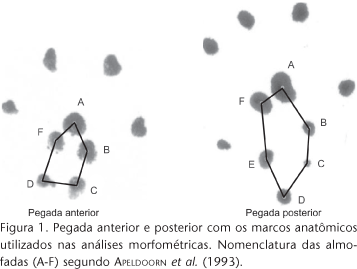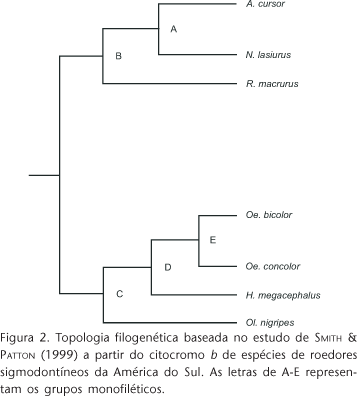Considering that species of rodents have different means of locomotion, this study presents and discusses variations on the anterior and posterior footprints shape of seven species [Akodon cursor (Winge, 1887), Necromys lasiurus (Lund, 1840), Oecomys bicolor (Tomes, 1860), Oecomys concolor (Wagner, 1845), Oligoryzomys nigripes (Olfers, 1818), Hylaeamys megacephalus (Fischer, 1814) and Rhipidomys macrurus (Gervais, 1855)], using geometric morphometrics and discriminant analyses. Shape variables were related to phylogenetic topology and means of locomotion of the species to verify the influence of historical or ecological factors on footprints morphology. Footprints shape of the arboreal rodents (short and wide) was clearly distinct of cursorial ones (narrow and elongated). The anterior (Kappa = 0,72) and posterior (Kappa = 0,88) footprint reclassification was considered substantial and almost perfect, respectively. The posterior footprints presented better results of species discrimination and set the levels of arboreal and cursorial activity of rodents. Allometric effects were observed in anterior (13%) and posterior (3%) footprint analysis. The means of locomotion explained 90.3% of footprint rodents shape variation (p = 0.02), indicating convergence on footprint morphological patterns of arboreal and cursorial rodents.
Cricetidae; geometric morphometrics; means of locomotion; shape









